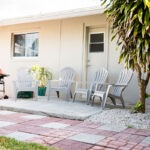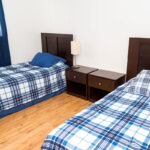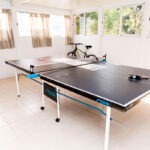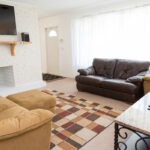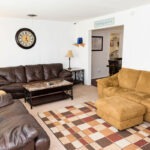When individuals make the courageous decision to embark on the journey of recovery from addiction, they often seek the support and structure provided by sober living facilities. These facilities offer a safe and supportive environment for individuals to transition from a life of addiction to one of sobriety. While the primary focus of these facilities is on helping residents maintain their sobriety, the issue of connectivity in the digital age presents a unique challenge. In this article, we will explore the importance of connectivity in sober living, the challenges associated with cell phone and laptop usage, and provide guidelines for striking a balance between connectivity and recovery.
Importance of connectivity in sober living
In today’s interconnected world, staying connected to loved ones, support networks, and resources is crucial for individuals in recovery. Cell phones and laptops have become essential tools for communication, education, and accessing various recovery-related resources. They enable residents of sober living facilities to stay in touch with their families, attend online support meetings, and access valuable recovery apps. Connectivity also plays a significant role in reducing feelings of isolation and providing a sense of normalcy during the recovery process.
Challenges of cell phone and laptop usage in sober living facilities
While connectivity can be beneficial, it also poses challenges in the context of sober living facilities. Excessive use of cell phones and laptops can become a distraction and hinder residents’ focus on their recovery. It may also expose them to triggers and temptations associated with their addiction. Additionally, the misuse of technology can lead to privacy concerns, such as engaging in online activities that compromise the privacy and safety of other residents. Thus, finding a balance between connectivity and recovery becomes crucial in maintaining a healthy and supportive environment.
Guidelines for cell phone usage in sober living facilities
To address the challenges associated with cell phone usage, sober living facilities can implement guidelines that promote responsible and mindful use. Some suggested guidelines include:
- Time restrictions: Set specific time limits for cell phone usage to ensure residents allocate adequate time to focus on their recovery activities without distractions.
- Designated areas: Establish designated areas within the facility where residents can use their cell phones, ensuring that these areas do not disturb or distract others.
- Screening and monitoring: Implement a screening process for cell phone applications and regularly monitor residents’ cell phone activities to prevent any misuse or potential triggers.
- Accountability measures: Require residents to sign an agreement outlining the guidelines for cell phone usage and ensure they understand the consequences of violating these guidelines.
By implementing these guidelines, sober living facilities can create a balance that allows residents to stay connected while prioritizing their recovery journey.
Guidelines for laptop usage in sober living facilities
Similar to cell phone usage, guidelines for laptop usage can help residents use these devices responsibly. Here are some suggested guidelines for laptop usage in sober living facilities:
- Purpose-driven usage: Encourage residents to use laptops for recovery-related activities, such as accessing online therapy sessions, educational resources, or employment opportunities.
- Limited internet access: Restrict access to certain websites or social media platforms that may be triggering or counterproductive to the recovery process.
- Supervised usage: Consider implementing designated time slots for laptop usage, where residents can use their laptops under staff supervision to ensure responsible and focused usage.
- Technology education: Provide residents with educational sessions on responsible laptop usage, online safety, and the potential risks associated with excessive technology use.
By establishing these guidelines, sober living facilities can create an environment that supports residents’ recovery efforts while utilizing technology as a helpful tool.
Balancing connectivity and recovery in sober living
Balancing connectivity and recovery in sober living is a delicate task. It requires recognizing the benefits of connectivity while also acknowledging the potential risks and challenges. By fostering an open dialogue with residents, sober living facilities can better understand their needs and concerns regarding connectivity. This allows for the development of personalized plans that strike a balance between staying connected and focusing on recovery.
Benefits of limited cell phone and laptop usage in sober living facilities
While it may seem counterintuitive to limit cell phone and laptop usage in a digitally-driven world, there are numerous benefits to doing so in the context of sober living facilities. These benefits include:
- Reduced distractions: Limiting cell phone and laptop usage helps residents minimize distractions and maintain their focus on recovery-related activities.
- Enhanced community engagement: By encouraging face-to-face interactions and group activities, limited technology usage fosters a sense of community among residents.
- Opportunity for self-reflection: Reduced screen time allows residents to engage in introspection and self-reflection, which are essential components of the recovery process.
- Improved sleep hygiene: Minimizing technology use before bedtime can help residents establish healthy sleep patterns, promoting overall well-being and recovery.
By embracing limited technology usage, sober living facilities can provide an environment that supports residents’ recovery journeys holistically.
Strategies for implementing guidelines in sober living facilities
Implementing guidelines for cell phone and laptop usage requires a thoughtful and strategic approach. Here are some strategies that can help sober living facilities effectively implement these guidelines:
- Education and awareness: Conduct regular educational sessions on the importance of responsible technology use, potential risks, and the benefits of limited usage.
- Staff training and support: Train staff members on the guidelines and how to enforce them effectively while maintaining a supportive and empathetic approach.
- Resident involvement: Involve residents in the development of guidelines to ensure their needs and concerns are taken into account, fostering a sense of ownership and accountability.
- Ongoing evaluation and adjustment: Regularly assess the effectiveness of the guidelines and make necessary adjustments based on feedback and evolving technology trends.
By implementing these strategies, sober living facilities can create a balanced and supportive environment that promotes residents’ recovery while embracing the benefits of technology.
Conclusion: Finding the right balance for connectivity in sober living
In the digital age, balancing connectivity and recovery in sober living facilities is a complex but necessary task. By recognizing the importance of connectivity while also acknowledging the challenges it poses, sober living facilities can develop guidelines that strike a balance between staying connected and prioritizing recovery. By embracing limited cell phone and laptop usage, residents can focus on their recovery journey, engage in meaningful connections, and foster a supportive community. Through education, communication, and ongoing evaluation, sober living facilities can create an environment that supports residents’ recovery while effectively managing the impact of technology. Finding the right balance for connectivity in sober living is an ongoing process, but one that is crucial for the long-term success and well-being of those in recovery.
If you or someone you know is seeking support in overcoming addiction, reach out to a trusted sober living facility that prioritizes connectivity and recovery. Remember, striking a balance is key to long-term success. Call us today at 866-963-7200.




